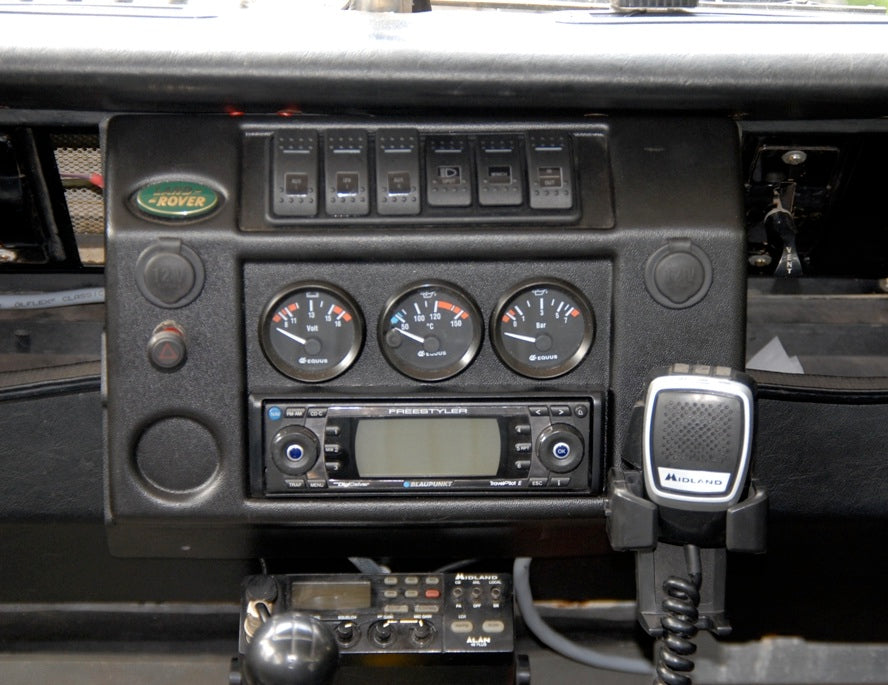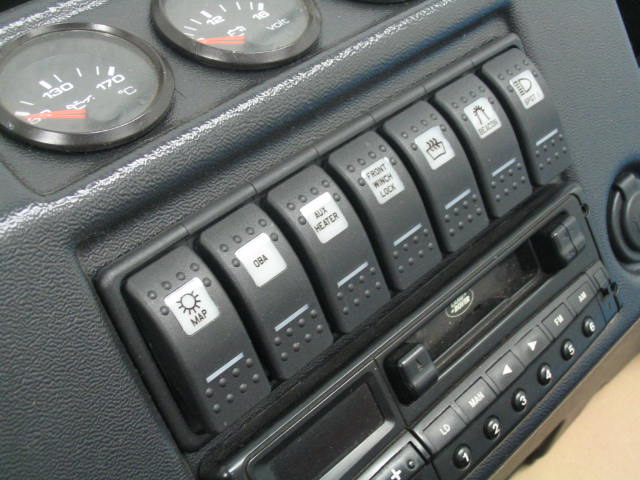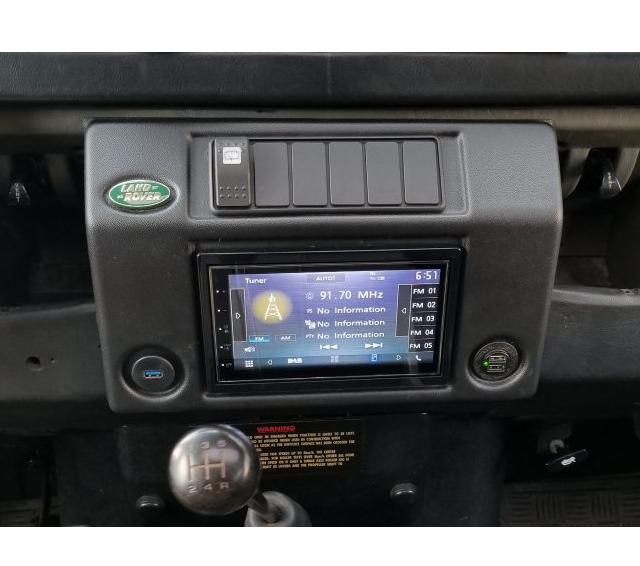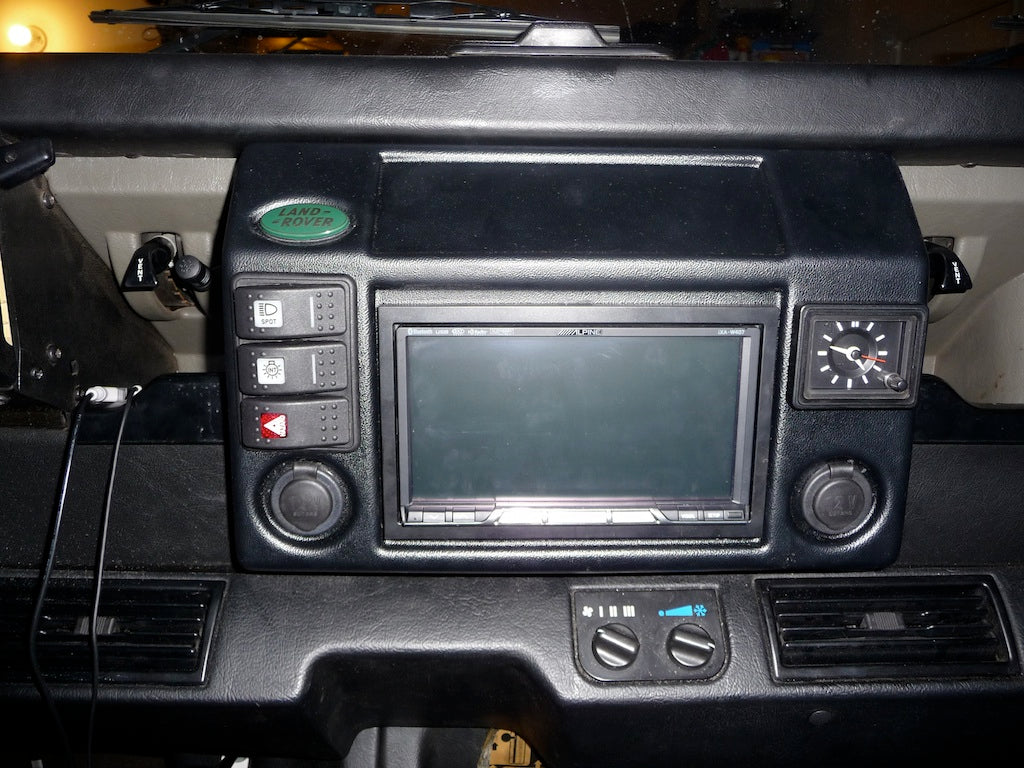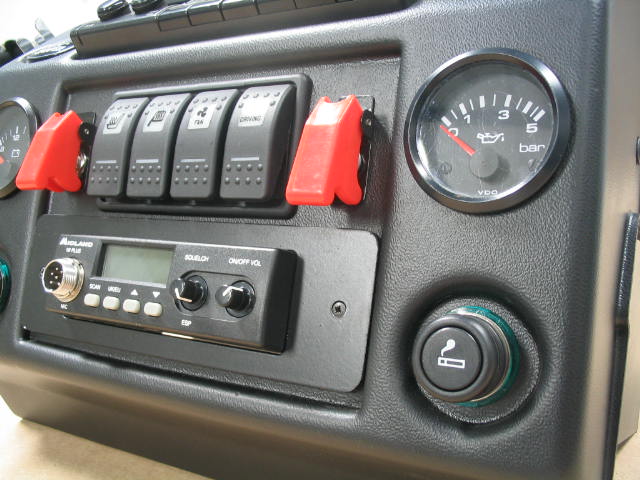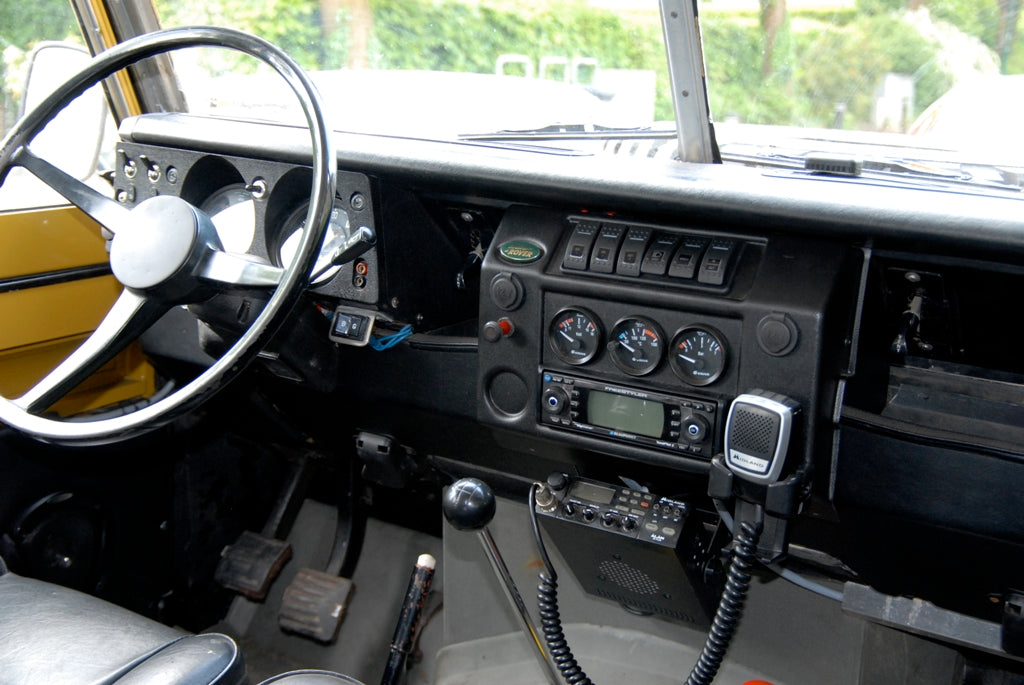Designed and manufactured in the UK, the MUD Defender Replacement Console is moulded from tough ABS plastic and even sports a textured finish that replicates the OE finish on the Defender dashboard.

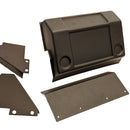
We know that when you shop online you want your order as soon as possible. Choose DHL shipping in the checkout and order before 2pm then you’ll get your stuff the next working day.
On smaller items we also offer a 2nd Class postage service. This normally takes 2-3 working days to show up at your door. If you’re in a rush go for the DHL option for a fully tracked service.
Big Stuff! Unfortunately, our Side Panels, Bulkhead Bars and longer lengths of Cargo Tracking are too big for DHL to handle. We generally use UPS or Fed-Ex but that’s on an ad-hoc basic so you need to order before 12 to get a next day service.
We charge the same rate to any UK address, which includes Highlands and Islands and Northern Ireland. We do this because we think its unfair to charge more just because you live remotely, lets be honest if we could, we’d live there too. In exchange please be patient if your parcel takes more than one day to arrive.
European Shipping
We use DHL to ship to all our European customers, this can range from a 1-5 working day service. The good news is most parcels arrive within 3 days of shipping. If you’re lucky enough to live in France, Germany or Belgium you might even get your parcel the next day.
Once you’ve ordered DHL will be in touch by email with tracking details. If you’ve chosen Royal Mail shipping then you should receive your parcel in around 10 working days (note this can be up to 28 working days).
Important information for customers within the European Union
Following the UK’s withdrawal from the European Union there have been changes to import and export practices. Customers within the EU will no longer pay UK Tax.
When the parcel arrives within your country you may be liable to pay both local VAT, import duty and admin charges. Please do not ask us to estimate the cost of any additional costs once the parcel has the left the UK. These charges are levied locally, they will vary from country to country.
As the buyer you are responsible for paying these charges, which must be paid before your goods are delivered. If you decline to pay the charges then the goods will be returned to us or destroyed depending on their value. Goods returned as a result of payment failure will be refunded. Delivery costs will not be refunded. Refused parcels may also levy re-entry fees into the UK, they will also be deducted from your refund. If you are thinking of rejecting a parcel due to customs charges, we strongly recommend you contact us first before you reject the parcel.
If you require further information, we recommend contacting your local tax office.
Please Note: If you live in The Alps or somewhere equally beautiful and hard to get to, we might have to use DPD or TNT to deliver. They should be just as quick.
USA & Canada Shipping
American & Canadian customers can expect a 2-3 working day service with DHL, depending on whether your East or West Coast. DHL will be in touch via email with all the info you need once you’ve placed your order.
Important information for US customers
Following President Trumps tariff changes customers in the USA are now liable to pay import duty on all overseas imports.
When the parcel arrives within the US you will be liable to pay both local VAT, import duty and admin charges. Please do not ask us to estimate the cost of any additional costs once the parcel has the left the UK. These charges are levied locally, they will vary from country to country.
As the buyer you are responsible for paying these charges, which must be paid before your goods are delivered. If you decline to pay the charges then the goods will be returned to us or destroyed depending on their value. Goods returned as a result of payment failure will be refunded. Delivery costs will not be refunded. Refused parcels may also levy re-entry fees into the UK, they will also be deducted from your refund. If you are thinking of rejecting a parcel due to customs charges, we strongly recommend you contact us first before you reject the parcel.
Rest of the World Shipping
The good news is we ship to pretty much everywhere (we don’t ship to Russia, sorry!).
The best service to choose is DHL, most parcels are delivered within 4 working days. This service is fully tracked and DHL will email you with all the details as soon as they’ve collected your ‘stuff’
If your parcel is light enough, you’ll be offered Royal Mail shipping in the checkout process. This will be delivered locally by your nearest post office. We’ve found that some countries have better postal systems than others. It can take up to 20 working days for post to arrive, so if you are in a rush please choose DHL in the checkout.
Customs & Duties
All packages imported to your country may be subject to customs, taxes or other fees. You are responsible for all applicable customs, duties, taxes and fees charged by your government.
We cannot guarantee that you will or will not be charged any customs taxes or duties.
If you’re worried about possible charges please contact your country's customs office prior to purchasing for respective charges and rates on packages coming from outside of your country.
If you decline parcels locally due to customs duty/tax charges then the goods will be returned to ourselves/ destroyed. Note this will incur further charges which we will debit from your refund, this can often be more than the original customs charges so we would advise you not to do this. If you have made a mistake with your order/ cannot pay the import duty charges then please get in contact with us and we will try to work out the best way forward for you.
Note: Please don’t ask us to declare your goods as a gift, or to value your items at less than they are worth. We’d love to be able to help you out, but we don’t want to end up in jail!
Returns & Exchanges
You can return unfitted items that you are not happy with within 28 days from purchase. If you’d like to return something or you believe you have a faulty item please contact us via email and we we’ll do our best to resolve the issue with as little fuss as possible.
Once we receive your returned parcel, we will process everything accordingly and keep you updated via email. We aim to refund customers the same day that an item is returned. If you originally paid by PayPal then you should receive the refund instantly. However, if you paid by sage pay using a credit or debit card it can sometimes take a few days for refunds to be credited.
If you believe you have received something in error or a part is missing from your delivery please contact us immediately. Packing errors can only be rectified if we have been informed of the error within 28 days of the parcel being received.
Your payment information is processed securely. We do not store credit card details nor have access to your credit card information.

